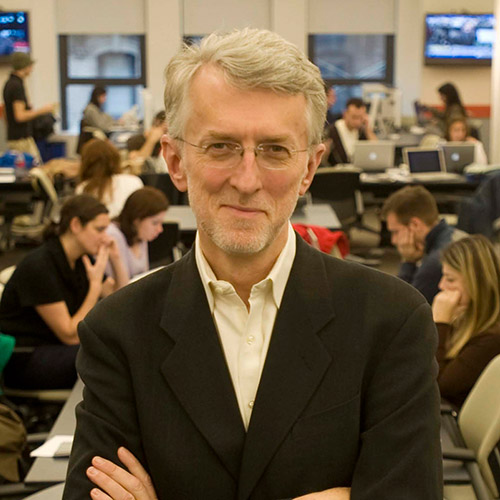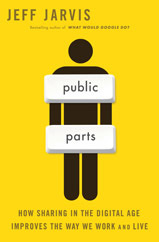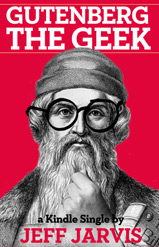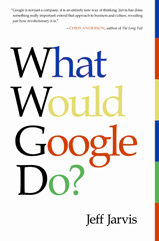
I am coming to a conclusion I have avoided for my last three decades working on the internet and news: It may finally be time to give up on old journalism and its legacy industry.
I say this with no joy, no satisfaction at having tried to get newspapers and magazines to change, and much empathy for the journalists and others caught working in a dying sector and those who count on them. But the old news industry is gasping for air. I’m not suggesting performing euthenasia on what is left. Nor do I dance on the grave. In my time running a Center for Entrepreneurial Journalism, now ending, I have tried to balance support for startups and legacy companies. But I wonder whether it is time stop throwing good money and effort after bad.
The old news industry has failed at adapting to the internet and every one of their would-be saviors — from tablets to paywalls to programmatic ads to consolidation to billionnaires — has failed them. Hedge funds have bought up chains and papers, selling everything not bolted down, cutting every possible cost, and taking every penny of cash flow home with them. The one thing the old companies are still investing in is lobbying.
In my testimony in the Senate last week, I engaged in the wishful if futile act of urging the legislators not to enact protectionist legislation written with the industry lobbyists who sat beside me, but instead to support the emergent reinvention of journalism occurring in communities everywhere. Not likely.
The bad news for news is constant. Just in the last month, the Los Angeles Times is laying off 115 people, throwing its newsroom into “chaos” and “mayhem.” Time magazine lays off 15 percent of its unionized editorial staff. Meanwhile, The New York Times chronicles the pains of billionnaires losing fortunes trying to save old news. I didn’t think it was possible for hedge funds to torture journalism more, but Alden just did something even worse than buying a paper: selling The Baltimore Sun to the mini-Murdoch, David Smith, chair of right-wing Sinclair, hater of news and newspapers. In the UK, the Mirror’s circulation has fallen from 5 million to a quarter million, its local papers are sputtering, and the company predicts print will be unsustainble — something I’ve been warning about for two decades. Once-grand Sports Illustrated is being murdered in plain sight. The FCC just announced it is trying to support local TV news, nevermind that audience for local broadcast news is small, old, and dying … and more and more made up of people watching the faux Fox, Sinclair.

Meanwhile, trust in journalism falls to ever-lower records. The Reuters Institute at Oxford tells us that a third of people actively avoid news, and who can blame them? I myself am fed up with old news’ wishful doomsaying, its credulous coverage of politics as sport, its bothsidesing and normalization of the rise of populist fascism, its refusal to call racism racism, its chronic lack of diversity, its dependence on access to power, its moral panic about technology, and the resource it wastes on copying and clickbait. Semafor and Gallup report that trust in journalists is falling now among Democrats, too.
And now here comes artificial intelligence to manufacture and devalue that thing we call content, robbing the old news industry of its sense of value and purpose in making the commodity. I’ve been trying to convince news organizations that they are not, or should not be, in content business, but that journalism is instead a service built on conversation, community, and collaboration. I have failed.
Of course, there are exceptions. The Boston Globe and StarTribune seem to be surviving or better. My old colleagues at Advance are innovating in Alabama, living on past print. (In his lengthy lamentation on death in news, Ezra Klein lists Alabama going out of print as a loss when I say it is a victory: life after the death of the press.) The Times is growing on the backs of games and food. The National Trust for Local News is saving papers here and there.
But then there’s Scranton, its paper now in the clutches of Alden. The Washington Post has chroncled their pain. On Feb. 9, I’ll be speaking at the University of Scranton’s Schemel Forum about what to do now. What should I tell them?
I will warn them to expect cutbacks and no investment or innovation at their dear old Times-Tribune. I’ve seen how Alden operates. As a member of a Digital First advisory board a decade ago, I saw the company innovate under John Paton and Jim Brady, but when that didn’t yield a sale in 2015, both of them left and the hedgies proceeded to cut to the marrow.
I come with no solution, no salvation; nothing’s that simple. There are many examples of people trying to find new futures for news. In my Senate testimony, I spoke of the 450 members of the New Jersey News Commons, which I’m proud to have helped start a decade ago at Montclair State University; and the 475 members of LION, the Local Independent Online News Publishers; and the 425 members of INN, the Institute for Nonprofit News. See also today’s news that The 19th is starting a new network for sharing news (something I tried in New Jersey years ago). This is where innovation in news is occurring: bottom-up, grass-roots efforts emergent in communities.
But as my old friend and colleague Peter Bhatia said when he made the controversial decision of dismissing the editor of the new Houston Landing, “We’re basically putting out a newspaper on the web. And that’s not a recipe for success for us for the long term, nor is it a recipe for sustainability.” I don’t know Houston Landing well enough to comment but I do worry that some of the efforts at new news still emulate and aspire to the form and function of old news.
I think we need to be more radical than that, much more radical than I have been.
I say we must fundamentally reimagine journalism and its role in a society under threat of authoritarian, anti-Enlightenment, fascist takeover. I recently wrote about a journalism of belonging. With my colleague Carrie Brown, I helped start a degree program — a movement carried on by our alums — in Engagement Journalism. There are other movements seeking to remake journalism: Solutions Journalism, Collaborative Journalism, Constructive Journalism, Reparative Journalism, Dialog Journalism, Deliberative Journalism, Solidarity Journalism, Entrepreneurial Journalism, and more. What they share is an ethic of first listening to communities and their needs and an urgency to innovate.
I note with optimism Mike Masnick’s just released report, The Sky is Rising, about the impact of the internet on media writ large — reading, watching, listening, and playing. It concludes, “More creative content is being produced that ever before. More people are able to create content than ever before, and more people are able to make money doing so…. And almost all of this is thanks to the power of the internet.” The report is talking mostly about entertainment but also notes that according to Census Bureau data, “it appears that internet publishing jobs more than replaced the jobs lost in newspapers and periodicals.”
There can be life after legacy. There will be roles for journalists. But journalism schools must expand their horizon to teach more than making content. How do we serve many publics in a networked world?
For the last two decades at least, I have told newspaper editors and publishers that they must imagine a day when print is no longer sustainable, and if they are not profitable digitally by then, they will die. Now I will tell the good people of Scranton to imagine a day when their paper dies, or is as good as dead.
What then? Citizens will have to come together to understand their needs as a community: for information, yes, and also for understanding, collaboration, accountability, repair, and service. They will need to decide what is best for Scranton and its many communities.
They might find some help, though never enough. Press Forward is bringing $500 million to the effort, but that can stretch only so far. The New Jersey Civic Information Consortium is doing interesting work granting state funds to bolster innovation. Perhaps Pennsylvania could do likewise. (Though I worry about what equivalent efforts in Texas, Florida, or Oklahoma would support.) California, like the US Congress with its JCPA, are talking about helping news — but what they’re actually doing is looking to blackmail tech companies on behalf of legacy news companies and their hedge-fund owners. JCPA specifically excludes news enterprises making less than $100,000 — which is to say most of those hundreds of innovators I listed above. No thank you.
The way out of this will be to educate and empower our next generation, not in so-called media literacy, but in media leadership, in taking responsibility for the health of their communities and their public discourse. That is a big, complex, nuanced, unsure order that will require marshalling the wisdom of disciplines far beyond journalism: history, anthropology, sociology, psychology, community studies, ethics, design, and the arts.
I am afraid to say that the newspaper and TV and commercial radio station of today are inadequate to the task. Their news was invented in the long century of mass media, which began (as I recount in Magazine) when Frank Munsey realized he could sell his eponymous periodical at a dime and a loss, but profit by selling his audience’s attention to advertisers. Thus was born the attention economy that now corrupts not only old media but new. The internet isn’t killing news. It is killing the mass and the myth that kept media alive all these years: that our attention is a commodity to be owned, bought, and sold.
I say this with reluctance and sadness but also with hope, for I am priviliged to watch some of my alumni try to create a new journalism at human scale, built on listening and serving communities, not nostalgia. How might Scranton do that? That will be up to Scranton, not to the heartless hedge fund — the Dunder-Mifflin of newspapering — that has come to town.







